Paediatric Oncology Unit
The CHUV is one of the five leading university hospitals in Switzerland. Thanks to its collaborations with various university institutes, care institutions and hospitals, the CHUV is recognised at the European and global level in the field of medical care, research and training. The CHUV’s Paediatric Haematology-Oncology Unit (HOP) cares for patients aged 0-18 years diagnosed with cancer or haematological disease. The various doctors in the unit have developed knowledge and expertise in one or more of the following areas: paediatric neurooncology, solid tumours, leukaemia and lymphoma, haemophilia, thrombosis and haemostasis, rare haematological diseases.
1. “INTERNATIONAL MULTICENTRE OBSERVATIONAL STUDY TO DETERMINE THE DIAGNOSTIC SENSITIVITY OF METANEPHRINES IN BLOOD AND CATECHOLAMINES AND METABOLITES IN URINE IN CHILDREN WITH HIGH RISK NEUROBLASTOMA”
The main aim of the research project is to study, in children with high-risk neuroblastoma, the role of free and total plasma metanephrines (2 chemical forms) at diagnosis and at the end of induction therapy. Specifically, the experts want to study the sensitivity of two diagnostic tests, one measuring metanephrines in plasma (blood) and the other measuring catecholamines and metabolites in urine, and compare them to standard assessment procedures.
2. EXPLANATION
Neuroblastoma is a tumour of the neural crest cells that are involved in the development of the nervous system, among other things, and presents as nodules or masses in the abdomen or near the spinal cord in the thorax, neck or pelvis.
To diagnose neuroblastoma and measure the response to treatment, various techniques are used, including the measurement of catecholamines (hormones released into the blood by the adrenal glands and the tumour) and its metabolites (metanephrines) in urine excretions. The catecholamines and urinary metabolites considered as standard are dopamine, homovanilic acid (HVA) and vanylmandelic acid (VMA). However, the accuracy of urine determination may be influenced by the method of analysis and by the possible inaccuracy of 24-hour urine collection in young children. Measurement of free and total plasma metanephrines could be an alternative to urine measurement.
3. THE PROJECT
The CHUV-led research project will take place in paediatric haematology oncology units in Switzerland, the Netherlands, Italy and Israel, and is expected to last 2 years. It plans to include a total of 130 patients. The research project has been approved by the Vaud Research Ethics Commission in May 2021 for the CHUV site.
4. OBJECTIVES
- Main objective
The study aims to evaluate free and total metanephrines in blood as an alternative to the measurement of catecholamines and metabolites in urine for the diagnosis and biochemical monitoring of neuroblastoma.
The primary objective is to demonstrate that the diagnostic sensitivity of plasma metanephrines (free and total) is superior to standard assessment procedures (urinary Dopamine, HVA and VMA) in the diagnosis and end-of-induction evaluation.
- Secondary objectives
– To assess whether the diagnostic sensitivity of plasma metanephrines (free and total) is equal to/superior to/inferior to urinary catecholamines and metabolites in diagnosis and end-of-induction assessment.
– Correlate plasma metanephrines (free and total) and urinary catecholamines and metabolites to outcome (end of induction remission) and compare to other diagnostic and monitoring benchmarks.
– Correlate plasma metanephrines (free and total) and urinary catecholamines and metabolites to different disease subgroups, such as age at diagnosis, disease stage, histology and molecular characteristics.

